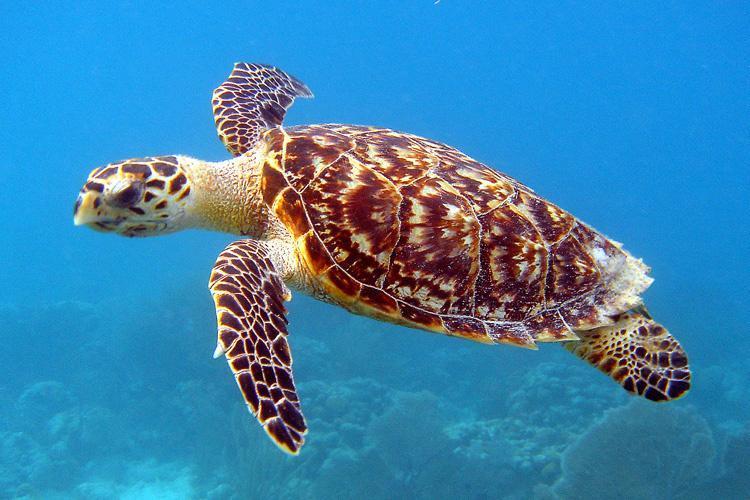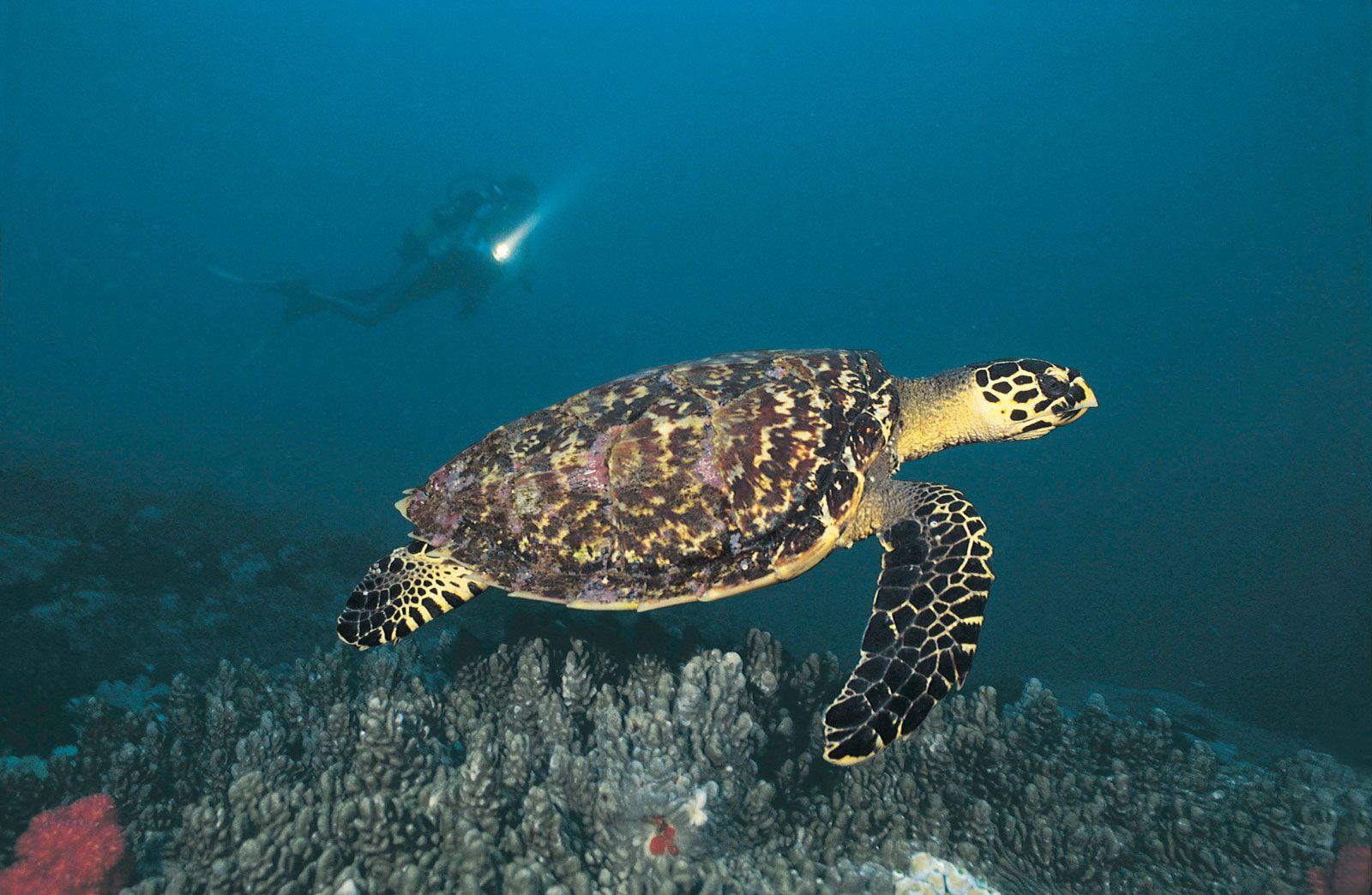Views: 0
Sea Turtles
Sea turtles are some of the oldest and most beloved animals on the planet. They are found in every ocean around the world, and are a symbol of marine life. Sea turtles play an important role in the environment, helping to maintain the delicate balance of the ocean. They help to keep coral reefs healthy, and eat jellyfish and other small animals that can damage coral. They are also a major source of food for other marine life.
Types of Sea Turtles
There are seven species of sea turtles: the green sea turtle, hawksbill sea turtle, loggerhead sea turtle, leatherback sea turtle, Kemp’s Ridley sea turtle, olive ridley sea turtle, and flatback sea turtle. Each species has different physical characteristics and behaviors. They all have a streamlined body shape, and their front and back flippers help them to swim with ease. All sea turtles have a hard shell to protect them from predators.
Features of Turtles
Green Turtles
- Shell: Green turtles have a unique, oval-shaped shell that is olive-green in color, giving them their name.
- Size: Green turtles are one of the largest species of sea turtle, with adults growing up to 3-4 feet in length and weighing up to 700 pounds.
- Mouth: They have a powerful jaw that allows them to consume large amounts of seagrass and algae, which make up the majority of their diet.
- Flippers: Green turtles have large, paddle-like flippers that help them swim long distances and navigate the open ocean.
- Migration: Green turtles are known for their long-distance migrations, traveling between feeding and breeding grounds.
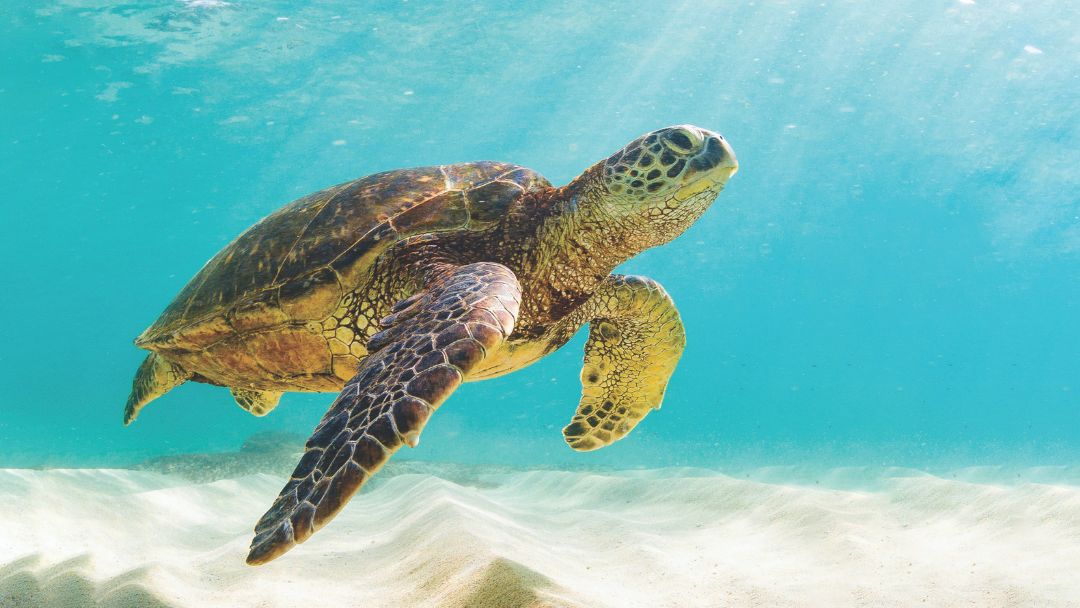
Loggerhead Turtles
- Shell: Loggerhead turtles have a large, rounded shell that can be reddish-brown to yellow in color.
- Size: They are a medium-sized sea turtle, growing up to 3 feet in length and weighing up to 350 pounds.
- Mouth: Loggerhead turtles have powerful jaws that allow them to crush hard-shelled prey, such as clams and crustaceans.
- Flippers: Their flippers are short and sturdy, giving them the ability to move quickly through the water and make quick turns.
- Migration: Loggerhead turtles undertake long migrations between feeding and breeding grounds, traveling thousands of miles across the open ocean.
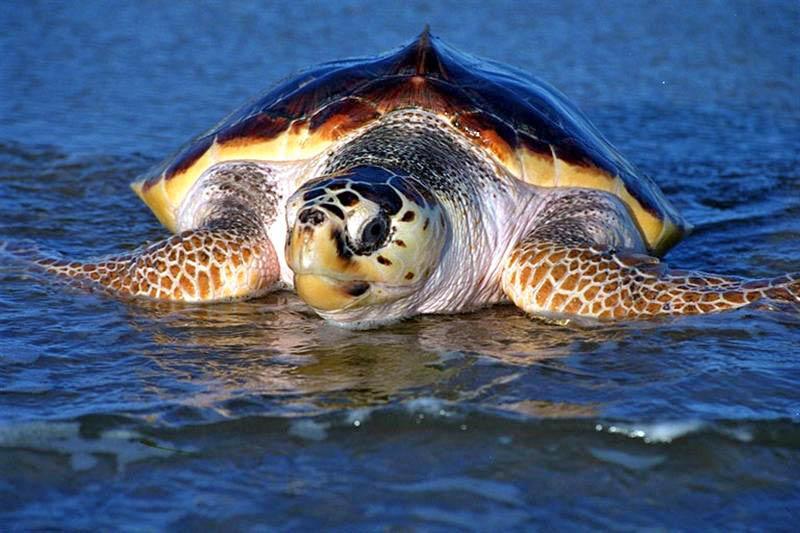
Leatherback Turtles
- Shell: Leatherback turtles have a unique, flexible shell made of a leathery material instead of the traditional bony plates found in other turtle species.
- Size: They are the largest species of sea turtle, growing up to 6.5 feet in length and weighing up to 2,000 pounds.
- Mouth: Leatherback turtles have large, pointed jaws that they use to capture jellyfish and other soft-bodied prey.
- Flippers: Their flippers are long and thin, making them the strongest swimmers of all sea turtle species.
- Migration: Leatherback turtles undertake the longest migrations of any sea turtle, traveling thousands of miles across the open ocean to reach their nesting and feeding grounds.

Hawksbill Turtles
- Shell: Hawksbill turtles have a unique, angular shell with overlapping scutes that give it a serrated appearance.
- Size: They are medium-sized sea turtles, growing up to 3 feet in length and weighing up to 200 pounds.
- Mouth: Hawksbill turtles have sharp, pointed beaks that they use to extract food from crevices in coral reefs.
- Flippers: Their flippers are narrow and pointed, giving them the ability to maneuver through rocky reef environments.
- Migration: Hawksbill turtles undertake long migrations between feeding and breeding grounds, traveling thousands of miles across the open ocean.
Olive Ridley Turtles
- Shell: Olive Ridley turtles have a rounded, heart-shaped shell that can be gray or greenish in color.
- Size: They are small to medium-sized sea turtles, growing up to 2 feet in length and weighing up to 100 pounds.
- Mouth: Olive Ridley turtles have broad, triangular jaws that they use to feed on a variety of prey, including jellyfish and shrimp.
- Flippers: Their flippers are wide and rounded, giving them the ability to swim quickly and efficiently.
- Migration: Olive Ridley turtles undertake long migrations between feeding and breeding grounds, traveling thousands of miles across the open ocean.
Kemp’s Ridley Turtles
- Shell: Kemp’s Ridley turtles have a rounded, triangular shell that can be gray or greenish in color.
- Size: They are the smallest species of sea turtle, growing up to 2 feet in length and weighing up to 100 pounds.
- Mouth: Kemp’s Ridley turtles have broad, triangular jaws that they use to feed on a variety of prey, including jellyfish and shrimp.
- Flippers: Their flippers are wide and rounded, giving them the ability to swim quickly and efficiently.
- Migration: Kemp’s Ridley turtles undertake long migrations between feeding and breeding grounds, traveling thousands of miles across the open ocean.
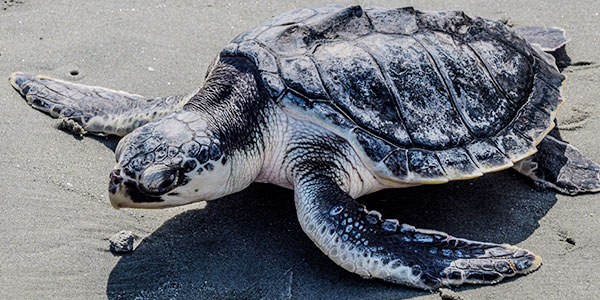
Flatback Turtles
- Shell: Flatback turtles have a unique, flat shell that is unlike the hard shells of other sea turtle species.
- Size: They are medium-sized sea turtles, growing up to 3 feet in length and weighing up to 200 pounds.
- Mouth: Flatback turtles have small, triangular jaws that they use to feed on a variety of prey, including jellyfish and crustaceans.
- Flippers: Their flippers are short and paddle-like, giving them the ability to swim slowly and maneuver through shallow waters.
- Migration: Flatback turtles undertake short migrations between feeding and breeding grounds, staying close to the coast.
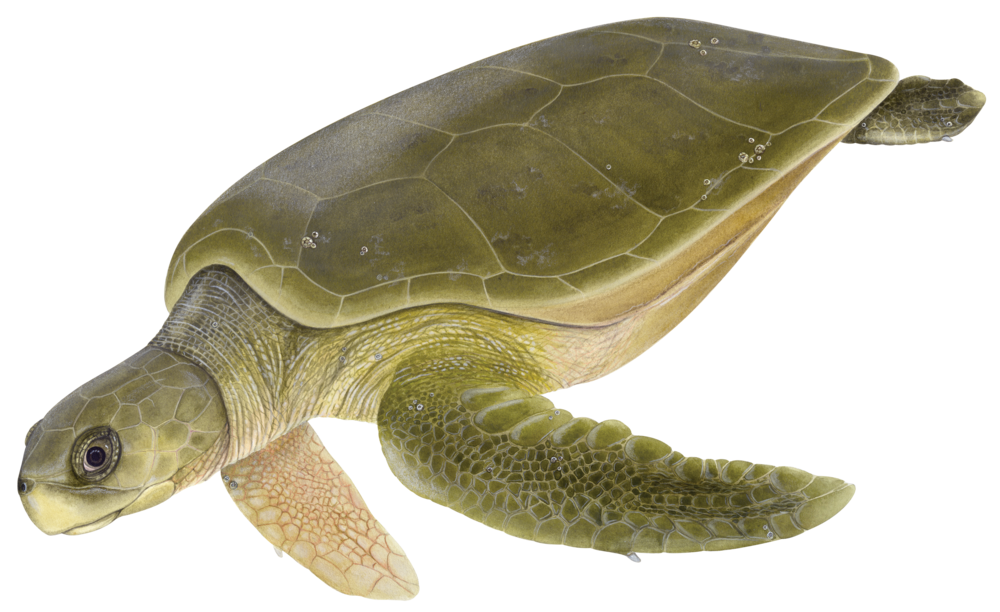
Sea Turtle Behavior
Sea turtles are social creatures, and they often travel in small groups. They generally live solitary lives, but they can be found in large groups when they are nesting or mating. They also communicate with each other through vocalizations, body language, and scent.
Sea turtles are migratory animals, and they travel long distances every year. They migrate to different areas to feed, nest, and reproduce. Some species of sea turtles migrate thousands of miles each year in search of food and better living conditions.
Threats to Sea Turtles
Unfortunately, sea turtles are facing a lot of threats from humans. Pollution, plastic debris, and fishing nets are some of the biggest threats they face. Climate change is also a major concern, as it is causing sea levels to rise and nesting beaches to become flooded. It is important that we take steps to protect these animals and their habitats so that they can continue to thrive in our oceans.

